Introduction
Welcome to an exciting journey into the world of exotic plants! Our today’s spotlight shines brightly on the Philodendron Florida Ghost. This unique member of the Philodendron family not only offers an intriguing name but also captures our fascination with its distinguished features and growth stages.
Delving into the Philodendron Family
Before we zoom in on the Philodendron Florida Ghost, let’s take a moment to explore the larger Philodendron family – one of the beloved families in the world of botany. Comprising of around 489 species, Philodendrons are native to tropical regions. They bring to the table a mesmerizing array of foliage shapes, sizes, and colors. From climbing varieties to large-leafed beauties, the sheer versatility within this plant species makes it a standout.
Spotlight: Philodendron Florida Ghost
Now, let’s bring our focus back to the Philodendron Florida Ghost. Surely its name ignites a sense of curiosity. You can’t help but wonder, why “Ghost”? As we delve deeper into the life of this plant, you will unravel this mystery and much more, gaining invaluable insight about its growth, care, and propagation.
Created through hybridization, the Philodendron Florida Ghost carries an air of charm and mystery. Known for its unique transformation process, it is a plant that captivates with its progression – from the youthful stage of near-white leaves to mature green, the plant ensures it remains the center of attention in your indoor plant collection or garden.
Don’t be intimidated if you’re a beginner, as this guide explores every corner of information necessary to help you successfully grow a Philodendron Florida Ghost plant. Moreover, even if you’re an experienced gardener, you might discover some unknown tidbits along the way!
Join us, as we embark on an enlightening exploration of the Philodendron Florida Ghost, covering its unique traits, care guidelines, propagation methods, and common questions among enthusiasts. Whether you’re eagerly sketching out your next garden project or casually flipping through for knowledge, we promise you an all-inclusive, insightful guide.
Name and Origin of Florida Ghost
Now that we’ve whetted your interest in the Philodendron Florida Ghost, let’s take a deeper dive into the story behind its captivating name and unique origins.
The Story Behind the Name
Quite often, the names given to plants allude to their key characteristics or their native regions. However, the moniker ‘Florida Ghost’ does not emerge from its place of origin but from the peculiar transformation it undergoes during its growth stages. Starting as a ghostly pale, almost white leaf hence the term ‘Ghost’, it gradually matures into a vibrant hue of green, rendering a visual spectacle.
It’s worth noting that the term ‘Philodendron’ originates from the Greek words ‘philo’ and ‘dendron’ that translate to ‘love tree’, fittingly describing the plant’s fondness for growing up trees and tall structures. The ‘Florida’ component of the name represents the hybridization that took place in Florida, USA, yet it does not speak to the plant’s native origin.
Tracing the Origins
Philodendron Florida Ghost, while cultivated in Florida, actually belongs to the tropical regions of South America and the Caribbean. Its ancestral roots connect it to the warm rainforests that cradle an extraordinary diversity of plant and animal species.
This hybrid species was birthed through the cross-breeding of Philodendron pedatum and Philodendron squamiferum. The combination of these two distinct yet compatible parent plants resulted in the Philodendron Florida Ghost – a plant that features the best attributes of both parents and adds its own unique flair with the ghostly transition of foliage color.
In this coming together of two dynamic species to form the Philodendron Florida Ghost, we see the sheer power of hybridization in the world of plants and appreciate the beauty it delivers. The ghostly transformation of its foliage color is a testament to the mysteries and wonders of the botanic world, captivating plant enthusiasts with its unending charm.
We’ll cast light on the physical features of the Philodendron Florida Ghost. Furthermore, we will also guide you through every step in taking care of this plant to ensure that it flourishes and thrives, bringing its unique blend of charm and mystery to your home or garden.
Florida Ghost Description

Having delved into the backstory of the Philodendron Florida Ghost’s name and origins, our journey now takes us to a detailed exploration of this remarkable plant’s physical features. From its unusual leaf transformation to the fascinating details of its stems and flowers, every aspect contributes to its pronounced charm.
The Mesmerizing Lifecycle of Leaves
Arguably the most intriguing feature of the Philodendron Florida Ghost is the metamorphosis its leaves undergo. When new leaves unfurl, their pale or almost white color earns them the title ‘Ghost’. The spectral initial look gives an otherworldly charm to this popular houseplant.
As these leaves mature, a fascinating transformation takes place. They gradually shift in color, transitioning through various shades of green. From an almost ghostly white to cream to light green, and finally, to a darker hue of green. The change isn’t abrupt, rather it slowly unfolds, keeping the observers waiting in anticipation.
These leaves aren’t just remarkable for their color-changing abilities either. They present a large size, typically reaching lengths of around 15-20 cm, and have an elongated shape, adding a touch of elegance to this plant’s overall aesthetics.
Speaking of Stems
The stem of the Philodendron Florida Ghost is equally engaging. Supporting the grandeur of the leaves, the stems are thin but sturdy and can grow to towering heights in their native rainforest environments. Over time, they typically develop a lush, bushy appearance, making the plant a visual standout.
Within indoor settings, these plants usually stay within modest bounds, height-wise. However, given the right conditions and care, they can definitely exceed expectations!
About the Flowers
When it comes to the subject of flowers, the Philodendron Florida Ghost tends to maintain a low profile. This is because the focus mostly stays on the color-changing leaves that overshadow the presence of the flowers. While this plant does flower under appropriate conditions, the blooms do not typically appear in customary indoor settings. Instead, it reserves its flowering prowess for the wild setting of its native rainforests.
Consequently, if you decide to grow a Philodendron Florida Ghost at home or in your garden, the flowers aren’t something that you will encounter commonly. Instead, anticipate an enchanting display of color-transforming foliage that will leave your guests fascinated!
Growth and Maintenance
Understanding the growth requirements and maintenance routines of the Philodendron Florida Ghost is crucial to ensure this plant becomes a thriving specimen in your botanical collection. From sunlight provisions to optimal temperature and humidity conditions, acquiring knowledge about these factors will make your journey as a plant caretaker more rewarding.
Ideal Growing Conditions
Just like with any other plant, the Philodendron Florida Ghost has its own set of preferences when it comes to growing conditions.
Sunlight
Philodendron Florida Ghost appreciates bright, indirect light conditions. Avoid exposing it to direct sunlight, as it can lead to scorching of the leaves. If you’re growing this plant indoors, placing it near an east or north-facing window is a sound strategy.
Temperature
As a tropical plant, it cherishes warm temperatures. The Philodendron Florida Ghost prefers temperatures between 65°F and 85°F (18°C – 29°C). Make sure that the temperature never drops below 50°F (10°C), as cold weather can obstruct its growth.
Humidity of Florida Ghost
With its roots in tropical rainforests, this plant naturally thrives in high humidity conditions. A humidity level around 60% or more is ideal for the Philodendron Florida Ghost. If your living environment is relatively dry, consider using a humidifier or placing a tray of water near the plant to increase the ambient humidity.
Soil Requirements and Watering Schedule
Soil Nutrition
For healthy growth, the Philodendron Florida Ghost demands well-draining soil. A mixture of peat, perlite, and orchid bark can cultivate an ideal soil condition for this plant, providing both excellent drainage and necessary nutrients.
Watering Regime
When it comes to watering, ensure to let the top layer of soil dry out between waterings. Overwatering can lead to root rot, a common issue among houseplants. It’s always better to err on the side of underwatering with the Philodendron Florida Ghost.
Caring Tips: Pruning and Repotting
Pruning
Regularly pruning your Philodendron Florida Ghost helps promote bushier growth and maintains a neat appearance. Get rid of any yellowing or dying leaves, as they could be a sign of illness which may spread to the rest of the plant.
Repotting
Typically, this plant needs repotting every 1-2 years, allowing it to grow without becoming root-bound. It’s best to repot your Philodendron Florida Ghost in the spring when the plant is entering a period of active growth.
Understanding and implementing these growth and maintenance tips will ensure your Philodendron Florida Ghost stays vibrant and dynamic. Up next, we will delve into the art of propagating this remarkable plant so you can expand your botanical collection!
Propagation of Florida Ghost
Acquainting yourself with the art of propagating the Philodendron Florida Ghost can be a rewarding experience, enabling you to expand your collection and share this exquisite plant with friends and family. The propagation process essentially involves taking stem cuttings from the parent plant, nurturing them, and stimulating new growth. In this section, we’ll guide you step-by-step through this process.
Gathering the Necessary Materials
Prior to beginning the propagation process, it’s essential to procure the required tools and materials. You will need:
- A sharp, clean pair of scissors or a pruning shears
- A small pot with well-draining soil or a container of water
- A plastic bag (optional to create a humid environment)
- Rooting hormone (optional)
Selecting the Right Stem Cutting
The first step in propagating your Philodendron Florida Ghost is identifying a healthy stem from the parent plant. Search for a stem that exhibits robust growth, is free from any diseases, and has at least two to three leaves attached. Once identified, use the clean scissors or pruning shears to make a cut about an inch below a leaf node.
Preparing the Stem Cutting
After obtaining the stem cutting, gently remove the bottom leaves, leaving only the top leaves. If you choose to use rooting hormone, now is the time to apply it to the severed end of the stem cutting. While not mandatory, rooting hormone can increase the odds of successful propagation.
Placing the Cutting in Soil or Water
Now, you have two choices: you can either plant the cutting directly in the soil or choose to propagate it in water.
Soil Propagation
Place the stem cutting into the small pot filled with well-draining soil, ensuring that it goes deep enough to cover the leaf node. Gently firm the soil around the cutting. Optionally, you can create a makeshift greenhouse by covering the pot with a clear plastic bag to maintain high humidity levels.
Water Propagation
Place the stem cutting in a container of water, immersing the severed end and ensuring the leaves remain above water. Select a spot that gets bright, indirect light for your water-propagated cutting.
Monitor the Growth
In either soil or water propagation, the cutting should begin to develop roots within a few weeks. Monitor the progress and keep an eye out for the emergence of new growth.
Transplanting the New Plant
Once the cutting displays adequate root growth, it’s time to transplant it into a larger pot (if it started in soil) or move it from the water container to a soil-filled pot. Continue to follow the care regimen discussed in the “Growth and Maintenance” section to ensure that the new Philodendron Florida Ghost flourishes alongside its parent.
By mastering the propagation process, you can cultivate new Philodendron Florida Ghost plants for yourself and others, spreading the beauty of this unique, color-transforming foliage to every corner of your world!
Common Problems and Solutions
While maintaining Philodendron Florida Ghost can bring immense joy, encountering problems along the way is a common part of the plant care journey. Nonetheless, understanding the possible issues and learning how to address them effectively can turn these dilemmas into opportunities for enhanced plant knowledge and care.
Yellowing Leaves
One of the most frequent problems many plant owners face is the phenomenon of yellowing leaves. When your Philodendron Florida Ghost starts developing yellow leaves, it could be an indication of overwatering.
Solution
To rectify this, first, scrutinize your watering routine. This plant prefers the soil to dry out slightly between waterings, so allow the top layer of soil to dry before watering again. Also, ensure the pot provides proper drainage to avoid waterlogged soil.
Drooping Leaves
Another common issue involves leaves that start drooping. Often, this could be due to under watering, where the plant is not getting enough water to sustain its physiological functions.
Solution
If drooping leaves occur, check the moisture level of the soil. It should be moist, but not saturated. Adjust your watering schedule according to the plant’s needs. Remember, let the top layer of the soil dry out before watering again.
Brown Leaf Tips
Brown leaf tips might be the result of low humidity or a buildup of salts and chemicals from tap water.
Solution
To tackle browning tips from low humidity levels, consider using a humidity tray or a room humidifier around the plant. If the issue is due to tap water, use distilled or filtered water for watering.
Pests
Like many plants, Philodendron Florida Ghost can attract a few types of pests, including spider mites, aphids, and mealybugs.
Solution
To remove these unwanted pests, wipe the leaves with a mix of dish soap and water. For persistent infestations, use a natural insecticidal spray. Always isolate infested plants to prevent the spread of pests to other neighboring plants.
Lack of Leaf Color Changes
If your Philodendron Florida Ghost’s leaves aren’t showing their signature color shift from white-green, it could be due to lack of light.
Solution
Place the plant in a bright area with indirect light to encourage this color change. Try avoiding direct sunlight though, as it can cause the leaves to scorch.
Dealing with plant problems may initially seem challenging, but remember, your perseverance and patience will pay off when you see the flourishing beauty of your healthy Philodendron Florida Ghost. And the knowledge you gain through this process will undoubtedly make you a better plant parent.
Benefits and Uses of Propagation
Embarking on the journey of nurturing a Philodendron Florida Ghost not only allows you to witness its mesmerizing color transformation abilities, but also brings forth an array of subtle benefits and possibilities for use.
Air Purification
One of the prominent advantages of having this plant around is its capacity to purify the air. According to NASA’s Clean Air Study, Philodendron species prove to be efficient in filtering indoor air pollutants, such as formaldehyde, benzene, and trichloroethylene. Hence, housing a Philodendron Florida Ghost can subtly contribute to creating a healthier living environment.
Ornamental Appeal
With its path of growth from an innocent white hue to a mature deep green, the Philodendron Florida Ghost serves as a dynamic addition to any home decor palette. The remarkable color transition of the foliage not only creates ongoing visual interest but also works as an attractive conversation starter during social gatherings.
Indoor Use
As a robust and adaptable plant, the Philodendron Florida Ghost is a perfect fit for indoor decor. Despite its tropical roots, it thrives relatively well in indoor conditions. Whether positioned as a standalone piece in a corner or grouped with other houseplants to create an indoor garden, it’s sure to add a touch of nature to your home.
Outdoor Use
In a warm, humid region, the Philodendron Florida Ghost can also work well for outdoor landscaping. It can be used in patios, balconies or as an understory plant within your garden. However, just ensure it doesn’t get exposed to direct sunlight for extended periods.
Physical Well-being and Mental Health
Having a plant like the Philodendron Florida Ghost around can indirectly benefit your physical well-being and mental health. Engaging with plants is known to reduce stress levels, enhance mood, and stimulate a peaceful mental state. Plus, the responsibility of plant care can infuse a sense of purpose and routine into your daily life, promoting a stable and mindful lifestyle.
Cultivating a Philodendron Florida Ghost not only enriches your plant collection but also carries several subtle benefits that can enhance your living experience. The amalgamation of its environmental, aesthetic, and health benefits, paired with its enchanting color transitioning leaves, ensures this plant brings something exceptional to the table, or perhaps better said, to the pot!
Conclusion
In conclusion, the Philodendron Florida Ghost is a uniquely captivating addition to both plant enthusiasts’ collections and the homes of those looking to elevate their interior design. Its remarkable color transformation abilities, purifying properties, and the wide array of benefits it offers make it a highly sought-after addition to any plant lover’s repertoire.
The journey of understanding, propagating, addressing common problems, and reaping the rewards that the Philodendron Florida Ghost brings can be genuinely enriching and gratifying. Not only does this extraordinary plant grace your living space with its shifting hues, but it also silently contributes to a healthier, more vibrant, and a serene atmosphere. So, why not embrace the Philodendron Florida Ghost’s charm and start your journey into the world of color-changing foliage today?

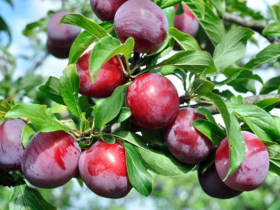
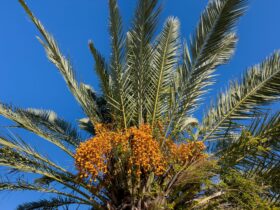

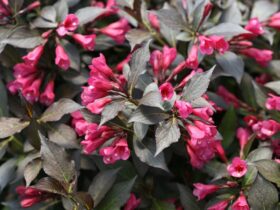
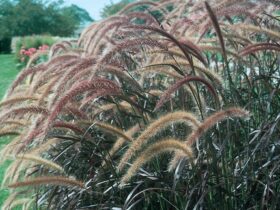
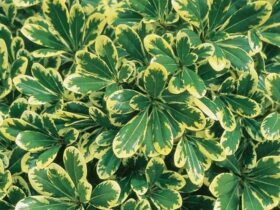


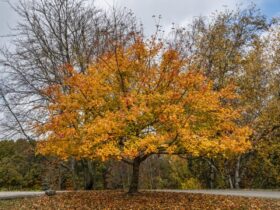

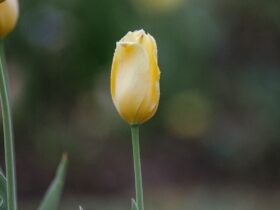
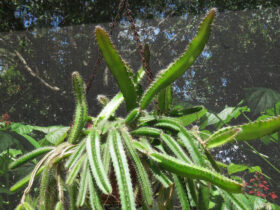
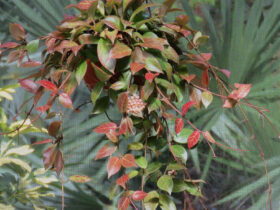
Leave a Reply